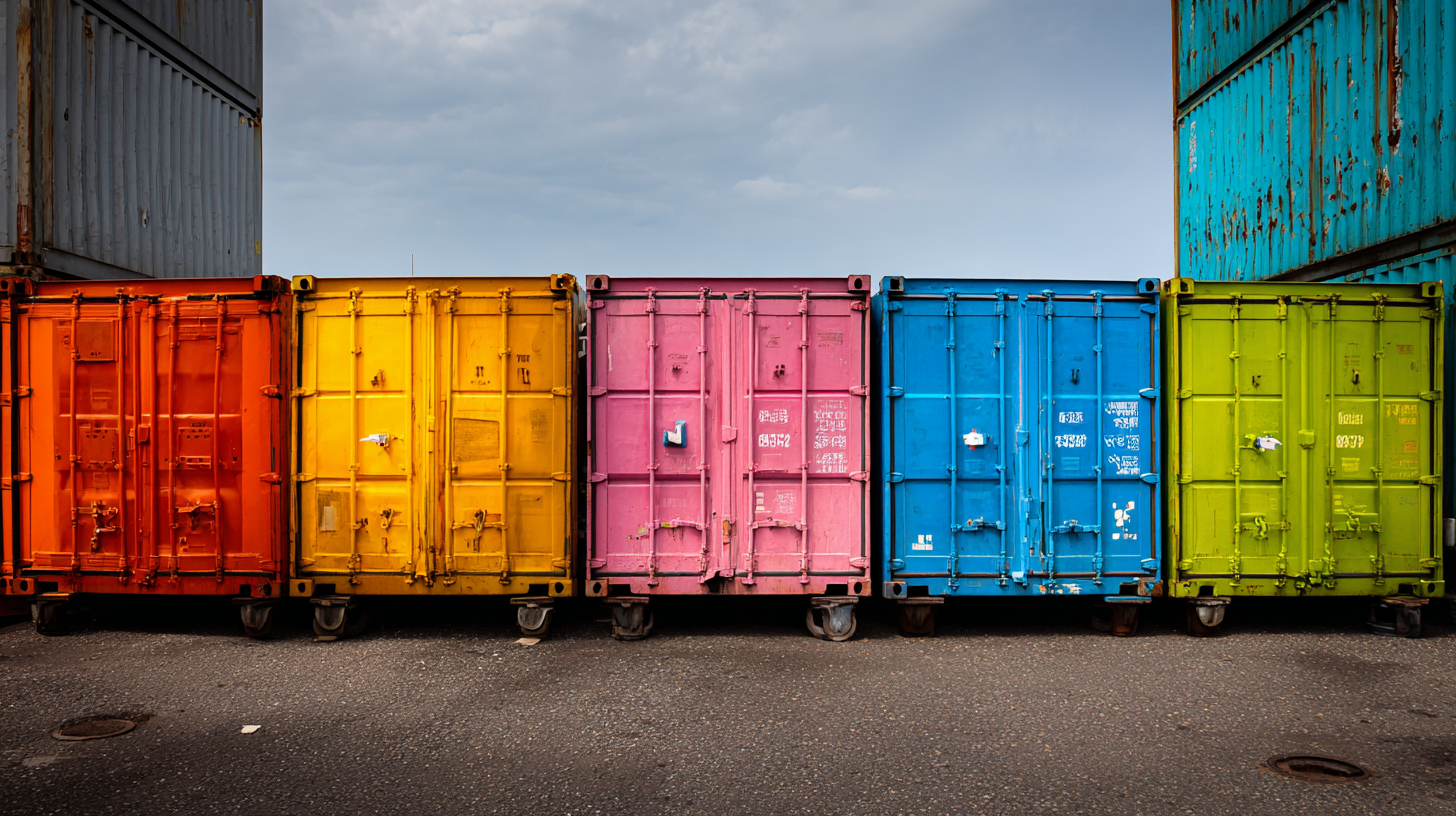In today’s rapidly evolving world, where sustainability is paramount, the utilization of second hand containers has emerged as a viable eco-friendly solution for modern living. According to a report by the Global Sustainability Institute, reusing containers can reduce carbon emissions by up to 70%, significantly mitigating the environmental impact of production and waste. With the global shipping industry producing millions of shipping containers annually, the adoption of second hand containers not only facilitates the promotion of a circular economy but also addresses the ever-growing demand for affordable and versatile living spaces. These containers, often repurposed for housing, storage, or innovative business solutions, underscore the potential to transform waste into resourceful assets. Embracing second hand containers presents a unique opportunity to foster responsible consumption and enhance our modern lifestyle while simultaneously contributing to a healthier planet.

The rising trend of second-hand containers is contributing significantly to sustainable living, as highlighted in recent studies on consumer behavior. As interest in eco-friendly solutions grows, more individuals are turning to second-hand options. This shift not only reduces waste but also minimizes the carbon footprint associated with the production of new containers. By reusing these items, consumers can actively participate in the circular economy, which emphasizes resource conservation and environmental stewardship.

Moreover, the environmental impact of second-hand containers extends beyond individual choices. The influx of second-hand consumption reflects a broader cultural attitude towards sustainability, encouraging a mindset that values reuse over disposability. As people become more aware of ecological concerns, the demand for second-hand products is rising, leading to innovative approaches in packaging and storage solutions. By embracing second-hand containers, we can collectively work towards a more sustainable future while enjoying the benefits of unique and often cost-effective alternatives.
Transforming second-hand containers into stylish home décor items is an eco-friendly approach that blends creativity with sustainability. One imaginative idea is to convert old glass jars into charming candle holders. Simply clean the jars, paint them in your favorite colors, or wrap them with twine for a rustic touch. Placing tea lights inside creates a warm ambiance, making them perfect for both indoor and outdoor settings.
Another innovative way to repurpose containers is to use wooden crates as unique bookshelves. Stacking these crates vertically or horizontally not only provides a functional storage solution but also adds character to your living space. You can leave them in their natural state for a farmhouse vibe or paint them to match your existing décor. By using second-hand containers, you're not just saving money but also reducing waste, making your home more environmentally friendly.
| Container Type | Repurposing Idea | Eco-Friendly Benefits | Estimated Cost |
|---|---|---|---|
| Wooden Pallets | Coffee Table | Reduces waste, provides unique aesthetic | $20 - $50 |
| Glass Jars | Storage Organizers | Reduces plastic use, promotes recycling | Free - $10 |
| Old Tires | Garden Planters | Encourages upcycling, adds rustic charm | Free - $15 |
| Tin Cans | Desk Organizers | Minimizes trash, promotes creativity | $0 - $5 |
| Old Ladders | Bookshelf or Display Rack | Repurposes old items, adds character | $30 - $70 |
Second-hand containers are rapidly becoming a go-to solution for cost-effective storage in both personal and commercial settings. According to a recent report published by the International Container Association, the use of refurbished containers can lead to savings of up to 50% compared to new container purchases. These cost-saving benefits do not compromise quality; in fact, many second-hand containers are constructed from durable steel, designed to withstand harsh environmental conditions, making them a reliable choice for long-term use.

In addition to being wallet-friendly, utilizing second-hand containers contributes to sustainability efforts. The Global Container Recycling Initiative indicates that repurposing used containers can significantly decrease landfill waste, with an estimated 800,000 containers reaching the end of their life cycle every year. By opting for recycled containers, individuals and businesses can play a pivotal role in reducing their carbon footprint while enjoying versatile storage solutions that suit various needs, from on-site construction storage to personal storage units in urban areas. Embracing second-hand containers not only makes financial sense but also fosters a greener approach to modern living.
When it comes to sourcing second-hand containers, it's essential to prioritize quality to ensure they serve their intended purpose effectively. Begin by exploring local thrift stores, online marketplaces, and community groups. Websites like Facebook Marketplace or Craigslist can be treasure troves for finding used containers at affordable prices. Always inspect items in person, if possible, as photos may not reveal structural issues. Look for containers made from durable materials like stainless steel or high-quality plastic, which can withstand wear and tear.
Once you’ve found potential containers, consider their previous use. Containers that originally held food or high-value items are often in good condition and safe for reuse. Additionally, check for lingering odors or residues, which may indicate contamination. Pay attention to seals and lids, as they are crucial for maintaining the integrity of the container. By following these tips when sourcing your second-hand containers, you can make eco-friendly choices that contribute to sustainable living while ensuring that your selections are both practical and reliable.
Second hand containers are a treasure trove for DIY enthusiasts looking to add personal flair to their homes while embracing eco-friendly practices. With a little creativity, old containers can be transformed into functional decor items that not only reduce waste but also tell a story.
Imagine repurposing glass jars as stylish plant holders or turning wooden crates into rustic shelving units. These projects allow individuals to tap into their artistic side while also supporting sustainable living.
The charm of DIY projects lies in their ability to add personality to any space. By sourcing unique second hand containers from thrift shops or creative reuse centers, crafters can uncover one-of-a-kind pieces that bring character to their homes. Adding DIY decor not only enhances the ambiance of a room but also creates a sense of accomplishment and connection to the items within. This spirit of creativity and resourcefulness contributes to a more sustainable lifestyle, proving that second hand doesn't mean second best.

